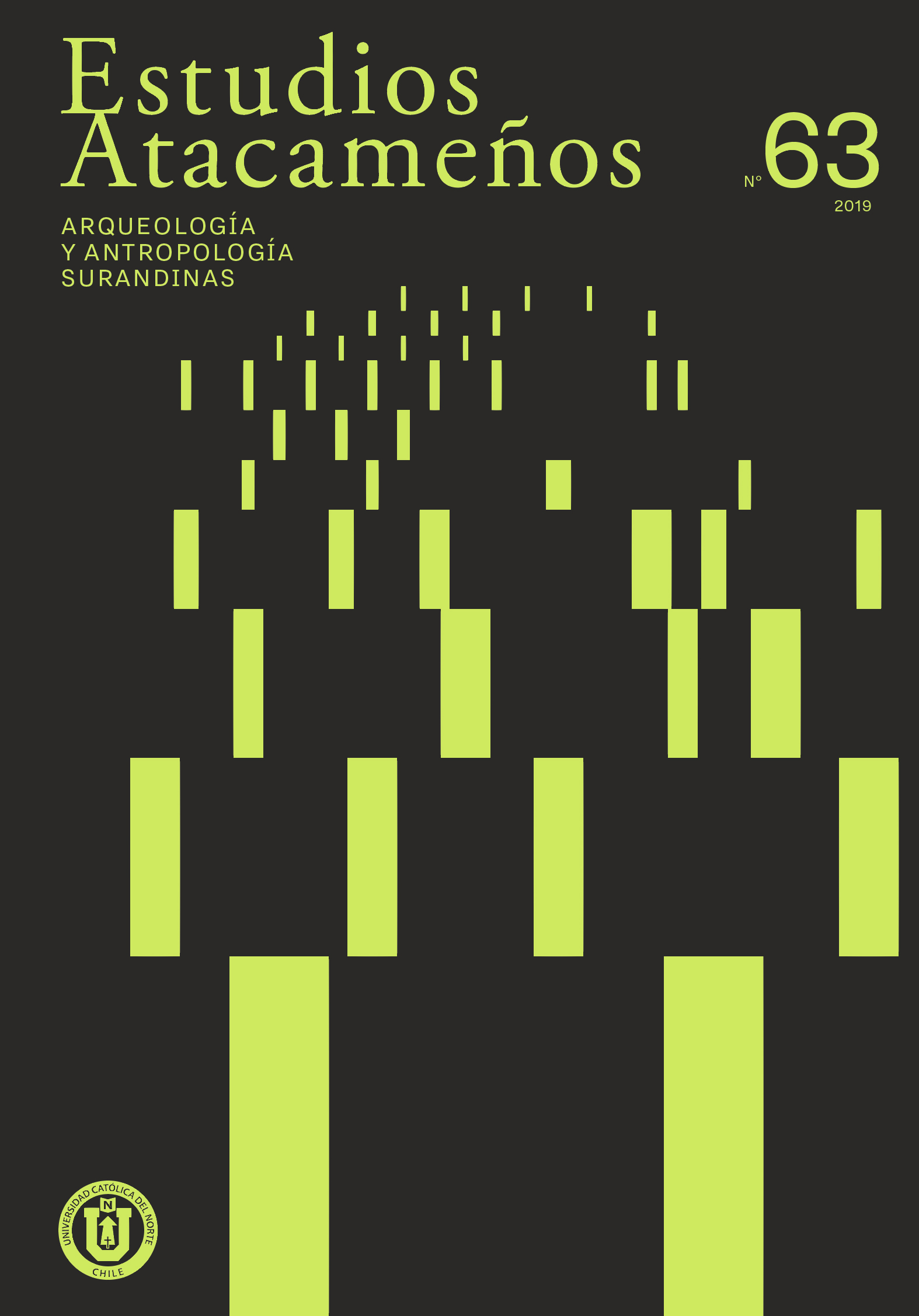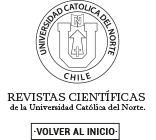Hydropower development and historic territorial reconfigurations in the Rimac watershed in Lima, Peru
DOI:
https://doi.org/10.22199/issn.0718-1043-2019-0032Keywords:
hydropower, hydrosocial territories, environmental history, Lima, PeruAbstract
The paper analyses how hydropower development in the Rimac watershed in the region of Lima, Peru, has reconfigured hydrosocial relations between the different water users since the 19th century. It shows how the hydropower development was supported and sustained first, by discourses about modernity, civilization and the need to domesticate nature and people through engineering; and second, by an evolving alliance of convenience between the hydropower company and Lima City’s drinking water company. Yet, this development has not straight forwardly let to rural communities being deprived of water, but rather to new dependency and power connections that may even provide additional water to local peasants. Recently, the revival of hydropower development in the watershed as well as worries about the adverse effects of climate change stir concerns of rural communities about the distribution of benefits and their position within the ecological and socio-political networks of the Rimac territories.
Downloads
References
Ahlers, R., Budds, J., Joshi, D., Merme, V. y Zwarteveen, M. (2015). Framing hydropower as green energy: assessing drivers, risks and tensions in the Eastern Himalayas. Earth Syst. Dynam., 6, 195-204.
Ansar, A., Flyvbjerg, B., Budzier, A. y Lunn, D. (2014). Should we build more large dams? The actual costs of hydropower megaproject development. Energy Policy, 69, 43-56.
Antúnez De Mayolo, S. (1929). Génesis de los servicios eléctricos de Lima. Lima, Perú: Biblioteca Nacional del Perú.
Associated Electric Companies (1967). Empresas Electricas Asociadas: 60 años al servicio de la comunidad (folleto). Lima: Archivo personal Andrés Boner.
Baletti, B. (2012). Ordenamento Territorial: Neo-developmentalism and the struggle for territory in the lower Brazilian Amazon. The Journal of Peasant Studies, 39, 573-598.
Bianchini, G. (1933). Carta de Gino Bianchini, director de las Compañías Eléctricas, al presidente de la República sobre el financiamiento de Compañías para el represamiento de las lagunas de Huarochirí. Aguas de regadío, Documento N° 1642. Lima: Archivo Nacional de la República.
Bleekers, S. (Inédito). La distribución del agua y acción colectiva comunal en la subcuenca de Santa Eulalia (Borrador). Pontificia Universidad Católica del Perú.
Boelens, R., Hoogesteger, J., Swyngedouw, E., Vos, J. y Wester, P. (2016). Hydrosocial territories: a political ecology perspective. Water International, 41, 1-14.
Boveri, W. (1960). Discurso del Dr. Walter Boveri. Lima.
Brighenti, A. M. (2010). On Territorology - Towards a General Science of Territory. Theory Culture Society, 27, 52-72.
Buse, H. (1959). "Huinco: primeras victorias: Batalla por el agua", Primera parte, El Comercio, 10 de junio, 1959, p. 3.
Buse, H. (1965). Huinco 240,000 KW, Lima, Perú.
Cleaver, F. (2018). Everyday water injusticesand the politics of accomodation. En Boelens, R., Perreault, T. y Vos, J. (Eds.). Water Justice. Cambridge: Cambridge University Press, 246-259.
Cronon, W. (1991). Nature's Metropolis. Nueva York y Londres: W.W. Norton & Company.
Elias, J. (1904). Carta de Jesús Elias, presidente de la Central Unión del valle del Rímac al director de Obras Públicas y Riego. Aguas de Regadío: Caso 31, Documento 10. Lima: Archivo Nacional de la República. El Presidente de la República (2009). Ley N° 29338 - Ley de Recursos Hídricos. El Peruano, 31 de marzo, 2009, 393473-393486.
Geoservice y Epasa (2010). Estudio de Impacto Ambiental. Proyecto Derivación Huascacocha, Lima.
Heynen, N., Kaika, M. y Swyngedouw, E. (2006). Urban politial ecology: politicizing the production of urban natures. En Heynen, N., Kaika, M. y Swyngedow, E. (Eds.). The Nature of Cities. Londres y Nueva York: Routledge.
Hidalgo, J. P., Boelens, R., Isch, E. (2018). The Daule-Peripa Multipurpose Hydraulic Scheme: technocratic reconfiguration of a hydro-social territory and dispossession in coastal Ecuador. Latin American Research Review, 53(3), 517-534.
Hommes, L., Boelens, R. y Maat, H. (2016). Contested hydrosocial territories and disputed water governance: struggles and competing claims over the Ilisu Dam de¬velopment in southeastern Turkey. Geoforum, 71, 9-20.
Hommes, L. y Boelens, R. (2017). Urbanizing rural waters: Rural-urban water transfers and the reconfiguration of hydrosocial territories in Lima. Political Geography, 57, 71-80.
Hommes, L. y Boelens, R. (2018). From natural flow to 'working river': hydropower development, modernity and socio-territorial transformations in Lima's Rímac watershed. Journal of Historical Geography, 62, 85-95.
Hommes, L., Boelens, R., Harris, L.M., Veldwisch, G.J. (2019). Rural–urban water struggles: urbanizing hy¬drosocial territories and evolving connections, discour¬ses and identities. Water International, 44(2), 81-94, Doi: 10.1080/02508060.2019.1583311.
Hoogesteger, J., Boelens, R. y Baud, M. (2016). Territorial pluralism: water users' multi-scalar struggles against state ordering in Ecuador's highlands. Water International, 41, 91-106.
Huber, A. y Joshi, D. (2015). Hydropower, Anti-Politics, and the Opening of New Political Spaces in the Eastern Himalayas. World Development, 76, 13-25.
Kaika, M. (2006). Dams as Symbols of Modernization: The Urbanization of Nature Between Geographical Imagination and Materiality. Annals of the Association of American Geographers, 96, 276-301.
K-Water, Yooshin Engineering y Pyungwha Engineering (2015). Plan Maestro del Proyecto Restauración del Río Rímac - Informe Formal. Lima: Autoridad Nacional del Agua.
Lari Jara, F. (1990). Agua para Lima. En Colegio de Ingenieros (Ed.) Lima: Archivo Nacional.
MacCully, P. (1996). Silenced rivers: the ecology and politics of large dams. Londres: Zed Books.
Ministerio de Fomento (1921). Aguas de regadío. Informe N° 27. Lima: Archivo Nacional de la República, RF-DA4, Caso 80, Documento 83.
Neue Zürcher Zeitung (1964). Pablo Boner - ein Schweizer Pionier. Morgenausgabe.
Nooteboom, G. y De Jong, E. (2010). Against “Green Development Fantasies”: Resource Degradation and the Lack of Community Resistance in the Middle Mahakam Wetlands, East Kalimantan, Indonesia. Asian Journal of Social Science, 38, 258-278.
Pfaffenberger, B. (1988). Fetishised Objects and Humanised Nature: Towards an Anthropology of Technology. Man (New Series), 23, 236-252.
President Huanza (1941). Expediente N° 4001, Relativo a comunidades indígenas de Huanza y aguas de la laguna “Carao”. Aguas de regadío, RF-DA4, Caso 52, Documento 513. Lima: Ministerio de Obras Públicas - Departamento de Agua y Riego. Lima: Archivo Nacional de la República.
Sanders, A. (2015). 'Wonderland Peru' - Migration and the making of an Andean Switzerland. En Purtschert, P. y Fischer-Tiné, H. (Eds.). Colonial Switzerland - Rethinking Colonialism from the Margins. UK: Palgrave Macmillian.
Scott, J. C. (2009). The Art of Not Being Governed. Yale University Press.
Sedapal (2014). Plan Maestro de los Sistemas de Agua Potable y Alcantarillado. Lima.
Swiss Embasy (1961). Brief an den Delegierten für Technische Zusammenarbeit Bern: Swiss Federal Archives.
Swyngedouw, E. (1997). Power, nature, and the city. The conquest of water and the political ecology of urbanization in Guayaquil, Ecuador: 1880-1990. Environment and Planning A, 29, 311-332.
Downloads
Published
Issue
Section
License

All works published in Revista Estudios Atacameños (ISSN on line:0718-1043) Revista Estudios Atacameños Creative Commons International 4.0 attribution (CC BY 4.0) licence.
Authors remain the owners of their work and may republish their articles elsewhere without having to request permission, as long as they indicate that the work was originally published in Revista Estudios Atacameños (ISSN on liine:0718-1043).












